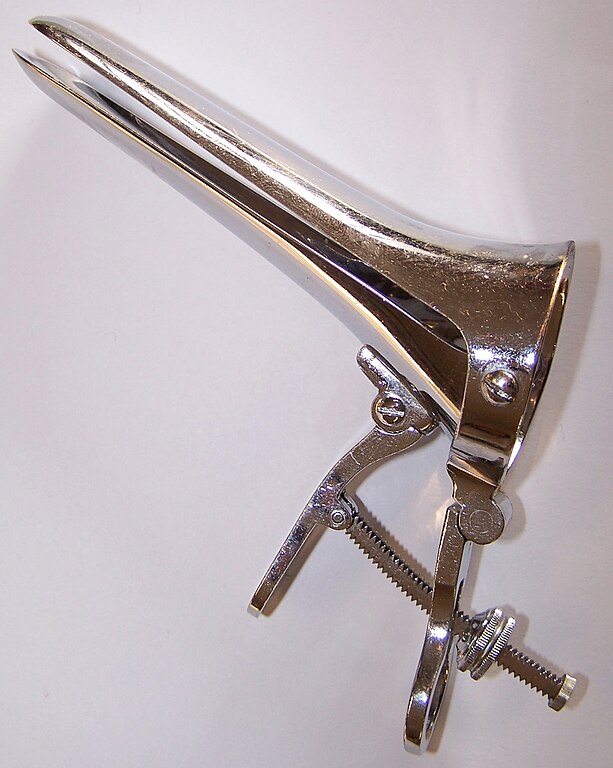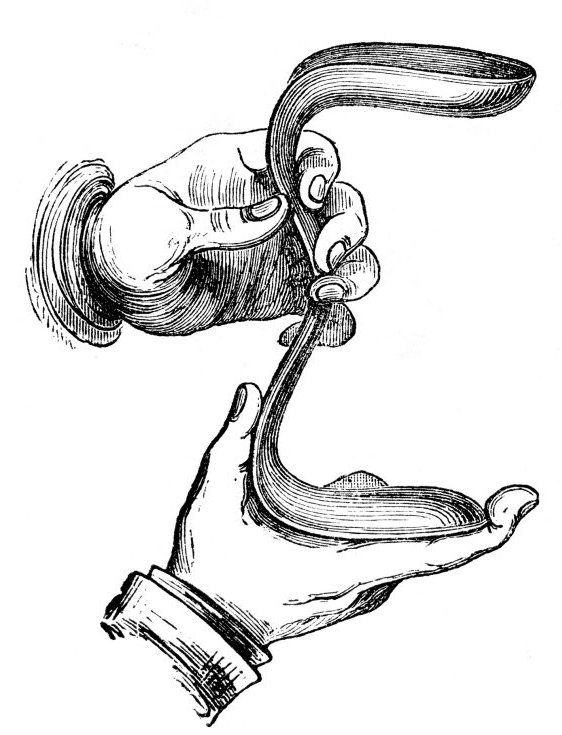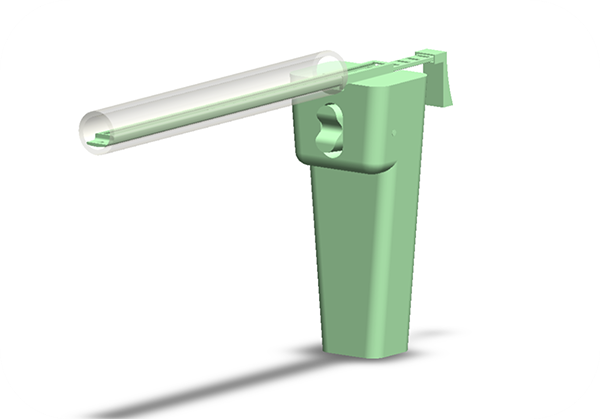
Sept. 11, 2023 - If women could avoid any checkup, it’s probably the pelvic exam – the one where they lie half-naked, feet propped in stirrups, to have their vaginal canal inspected using an invasive instrument: the speculum.
The vaginal speculum was invented in the 1840s by Dr. James Marion Sims who initially put a bent gravy spoon in an enslaved woman to see inside her body.

Sim’s device was updated by Thomas Graves in 1870 to give us the duckbill model doctors use today for pelvic exams and pap tests that detect cancer, but no one has since invented anything that has replaced the ancient tool’s widespread use in hospitals.
That’s where Feminora comes in.
Feminora is a limited liability company (LLC) that was inspired by a team of five UCI engineering students. In 2019, the undergraduates wanted to design a new vaginal speculum for their project in the SOLIDWORKS design course taught by Christine King, associate professor of teaching in biomedical engineering.
At the time, UCI OB-GYN Dr. Dinh Vu also approached King at UCI’s startup incubator, Beall Applied Innovation, with the idea to design a novel vaginal speculum. Vu said many patients complain about how painful the duckbill model is.
Dr. Vu also wanted a device that enables better visibility. After multiple births, women’s vaginal walls can cave in which makes it hard for doctors to see the pelvic organs clearly. Physicians use the vaginal speculum to screen for cancer and sexually transmitted diseases, and for prenatal care and IUD insertions.
On the patient’s end, the duckbill speculum is unpleasant and makes a startling clicking sound. It may also pinch obese patients and those with vaginal laxity when it closes.
“The speculum can scare women away from getting their pelvic exams,” said King. “As engineers, we want to solve that problem.”

The students worked closely with Vu and other doctors and nurses to create their novel device, the OneSpec. Joyce Chen, a biomedical engineering major and one of the team’s lead designers, said their goal is to increase visibility for physicians and comfort for women. They also aim to create an affordable model that can be reused and sterilized.
They shaped and sized the OneSpec like a tampon, something women are more familiar with, and it expands to fit the patient.
The OneSpec placed well in two student design competitions this year: second place in the National Institutes of Health Design by Biomedical Undergraduate Teams (DEBUT) Challenge and first place at UCLA’s MedTech Partnering Conference.
“Our OneSpec design is very promising not only for patients, but also for physicians in ease of use,” said biomedical engineering major Anushka Chauhan.
OneSpec begins with the half-inch diameter of a tampon and expands up to two inches. The 360-degree design improves visibility and eliminates painful pressure points. It’s also quiet.

King believes a more comfortable experience at the gynecologist can reduce cancer rates. “If you’re scaring women away from getting preventative care, you’re essentially causing cancer.”
Worldwide, cervical cancer is the fourth most common cancer among women. According to the World Health Organization, around 342,000 women died from the disease in 2020.
The Centers for Disease Control says cervical cancer is 93% preventable through screening and HPV vaccines. However, national studies show some women avoid pelvic exams due to discomfort, anxiety and embarrassment.
If the speculum is so important for women’s healthcare, why hasn’t it been redesigned earlier?
“Since it’s about women’s health, vaginas, and vaginal canals, people aren’t as comfortable talking about what goes on down there,” said King. “When you’re presenting, it’s usually to male venture capitalists who have no idea.” But she said some have shown interest because their wives complain about the speculum all the time.
“You have to have that female perspective,” said King. As male doctors and engineers don’t have personal experience with the instrument, they often don’t realize the need. In recent years, some companies have invented newer versions, but doctors have been reluctant to learn how to use them.
As for the OneSpec, the students are finalizing their award-winning design and getting ready to submit their 510(K) to the FDA for premarket notification this year. With UCI doctors behind this new model, it could become more easily integrated into major hospitals.
“I’m not exaggerating when I say Feminora is the coolest thing I’m a part of,” said Chen. “Every single woman that I’ve told we’re reinventing the speculum says, ‘Oh, thank goodness! It’s about time!’”
Chauhan loves that she can help create medical devices that enhance quality of life and life expectancy. “I feel powerful being a woman in engineering,” she said. “I want to be a part of something that can revolutionize women’s health.”
- Natalie Tso
